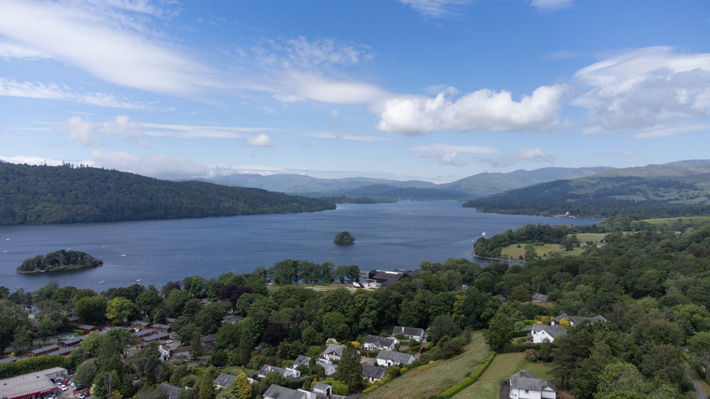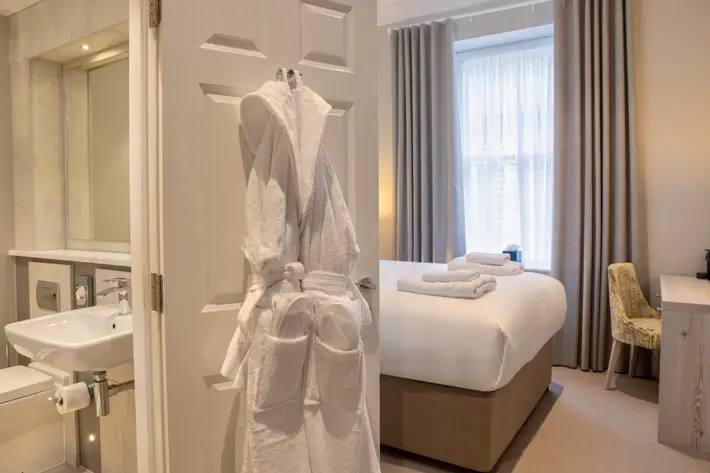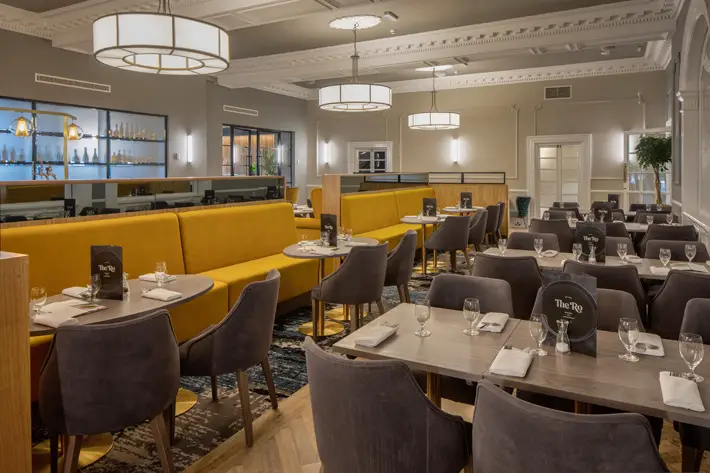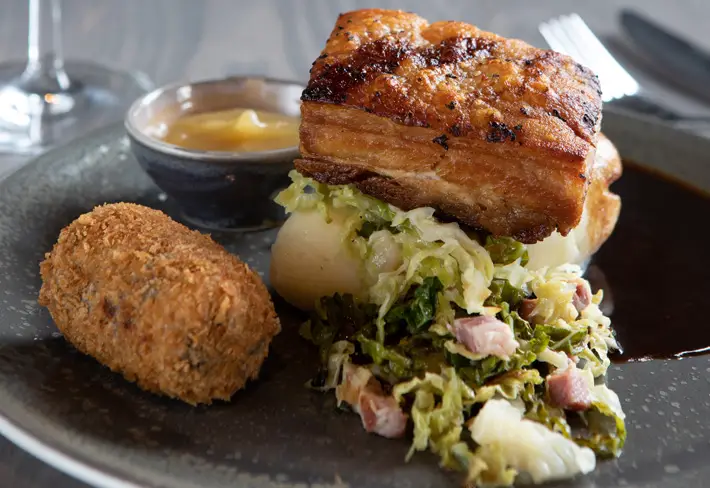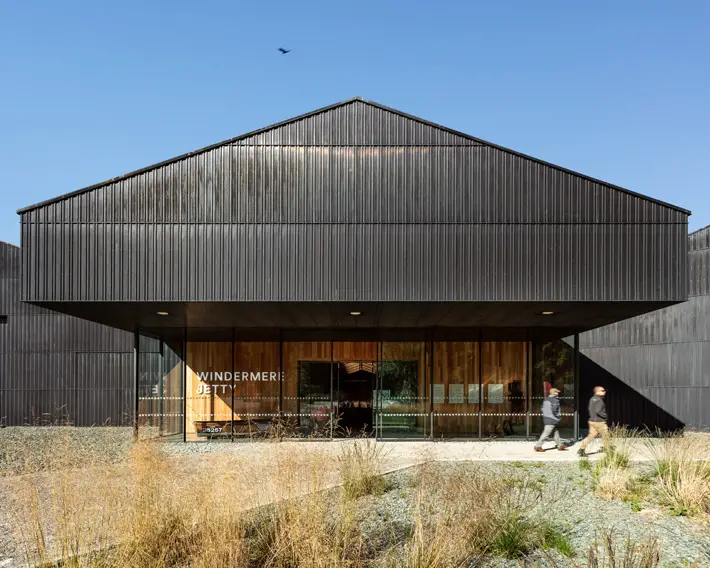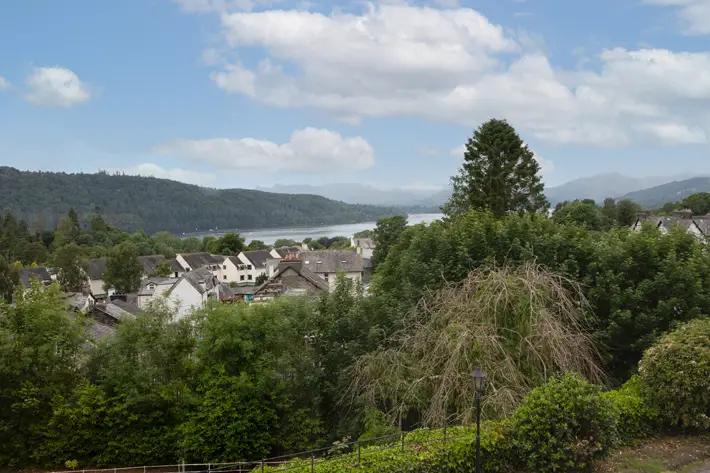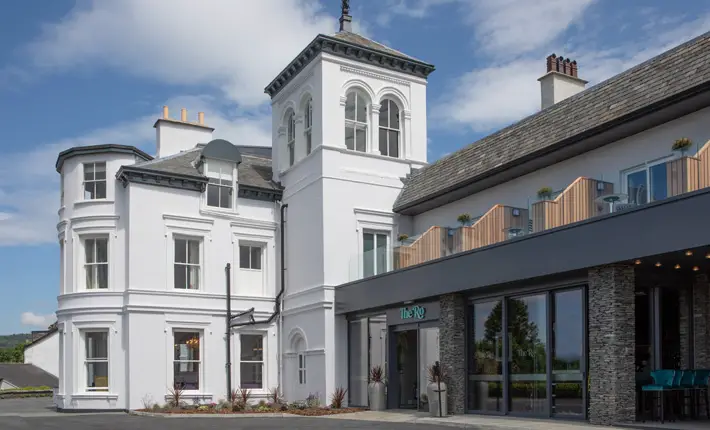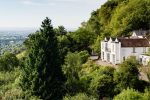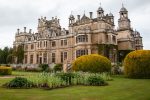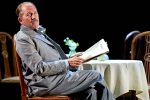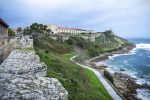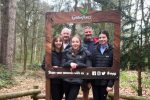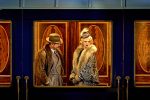The Ro Hotel, Bowness-on-Windermere – Review
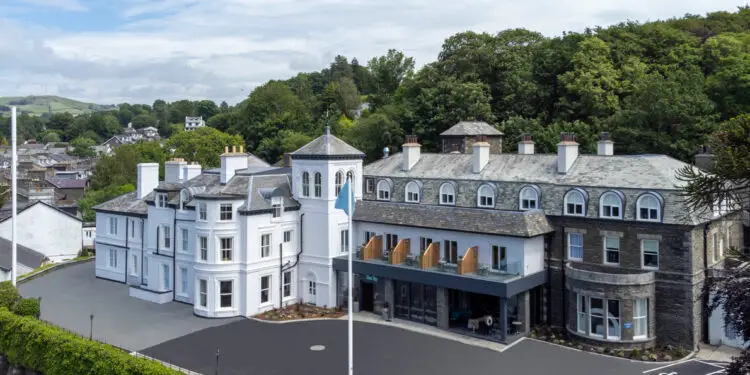
By Clare Jenkins, April 2022
If you want to know the difference between a fell, a pike and a hill, or you think all the different stretches of water in the Lake District really are lakes, or you don’t know where to go for a scramble, ramble or amble, you could do worse than ask Adam Sharrock.
Adam, food and beverages manager at the newly reopened Ro Hotel in Bowness, is a mine of information, not just about menus but about the Lake District itself. Born and bred in Kendal (which, he says, has “one of the fastest flowing rivers, the widest church, mint cake, and a walking festival”), he seems to know every nook and cranny, where to see red deer in autumn, red squirrels any time, and is happy to point out that the only actual lake in the Lake District is Bassenthwaite – “the rest are all meres, tarns and waters”.
He’s also passionate about walking, climbing and advising visitors on the best places to go, whatever they want to do. So it comes as no surprise to learn that, as a 12-year-old, he was befriended by the iconic fellwalker and guidebook author Alfred Wainwright – “I know he had a reputation for being grumpy, but I thought he was a lovely old man”. There’s counter-intuitive for you.
“Magical”
The Ro Hotel is as good a place as any to explore Bowness, Windermere and all the surrounding area. Standing proud up the steep Helm Road, it’s one of the oldest hotels in the Lake District, opened in 1881 as The Windermere Hydropathic Establishment, where guests could indulge in – or be subjected to – water cures. At some point in its history, the name was shortened to The Hydro, the water cures transmuting into a swimming pool and sauna. It’s now been shortened again, and the décor reflects a similar liking for minimalism.
Whitewashed Victorian on the outside, the hotel is far from frills and furbelows on the inside – all pared-back chic and a colour scheme that is, if not 50 shades of grey, certainly five, paired with white, taupe and ‘greige’ (a blend of grey and beige, apparently). Ornamentation, too, is muted – black and white close-ups of nature by Lancaster-based photographer Mike Shephard, the odd Victorian print of the area, and a wall of sepia photos of the hotel in its early years. There’s a cascade of fake flowers and ferns in the entrance, a few dazzlingly-pink artificial orchids and white blossom trees here and there, but the occasional splash of Hockneyesque colour along the wide corridors and in the bar and restaurant wouldn’t go amiss, especially given the Lakes’ generous lashings of grey rain. Luckily, when we were there, the sun shone throughout.
As a result, we could sit outside our Super Lake View Balcony room (one of five, from around £190 B&B a night) and look across the roofs of Bowness to the lake, the Royal Windermere Yacht Club on the left, the Gothic Wray Castle across the water, and the hills beyond. All of which looked particularly magical at sunset.
There are 87 bedrooms all told, ranging from the compact Wonderous [sic] rooms to the splendid Ro Suite, which is understandably popular with honeymooning couples, boasting panoramic views, a spacious bedroom, and a bathroom up a short flight of stairs into the tower.
Our own room had plenty of space – a lobby, good-sized bathroom with cascade shower and plenty of Places to Put Things, and French windows opening from the bedroom onto the balcony, complete with table and chairs.
There were Kendal-based Farrers teas and coffees, plus a Nespresso, Harrogate spring water and cookies (we’d already had a home-made one from Ellie on reception, after admiring Barnie, the hotel’s adopted marmalade-coloured cat). There were organic aloe leaf Eco-boutique bath products – though no bars of soap as such – towelling dressing-gowns and slippers in the wardrobe, and – joy of joys! – an iron and ironing board.
“Well-balanced”
Dinner was in the unfussy ground-floor Lacu restaurant (open to non-residents, as is the glass-fronted bar) – which is where we met Adam. We started with a couple of snacks – halloumi fries with sweet chilli dipping sauce (£4.50) and olives marinated in rosemary and garlic (£3.50) – having decided to skip the soup/meat balls/smoked salmon pate/chicken liver parfait/baked Camembert starters (from £6.50 to £14). As vegetarians, we both had the sweet potato, spinach and chickpea curry (£17.50), though Adam subsequently assured us that another vegetarian meal could have been provided, on request. Other mains included sea bass, Cumbrian lamb, chicken and pork belly, the eight options ranging in price from our £17.50 to £29 for the rib-eye steak. For dessert, we shared orange posset with a compote of Yorkshire rhubarb and vanilla bean ice cream (£7.50).
The wine list ranges from £26 for the house white (we had a bottle of Rapaura Spring New Zealand sauvignon blanc) to £90 for a Rene Bouvier Cotes de Nuits-Village.
All told, it was a well-balanced, wholesome meal, enhanced by Adam’s tips and shared tales of travel experiences. And he was there again at breakfast, which is served buffet-style, with a range of juices and cereals, fruit salad, jars of berries with yoghurt, slices of cheese and ham, plus the usual Full English. Our scrambled egg was excellent, but we puzzled over the lack of teapots and milk jugs (again, both were available on request, we were subsequently told – hmmm…).
After breakfast, to escape the madding crowd of Bowness immediately post-Easter, we drove ten minutes to the beautiful Blackwell Arts & Crafts house built between 1898 and 1901, and perfectly preserved from the days when the Holt family (of Joseph Holt Brewery fame) spent their summers here. Designed by Mackay Hugh Baillie Scott and flooded with light, it’s a masterpiece of carved wood panels and furniture, stencilled friezes of peacocks, carvings of birds entwined with rowan branches, stained glass lilies – delight at every turn.
There’s a minstrels’ gallery and snug corners everywhere – windowseats to whisper secrets on, inglenooks around fireplaces edged with Dutch delftware tiles, crannies with elegantly curved chairs, fire irons designed with daisy heads and rowan berries. There’s work by William De Morgan, William Morris, John Ruskin, Ernest Gimson (‘the greatest of the English architect-designers’, according to Nikolaus Pevsner). Even the iron window catches are works of art.
There’s also a popular café, an elegant shop, beautifully maintained grounds that lead down to Lake Windermere – and a regular talk about the Grade 1 listed building at 2pm.
“Experience sailing”
On previous visits to Bowness, we’ve visited Brantwood across Coniston Water, the manorial home of the great Victorian writer, artist, critic and social reformer John Ruskin. It was here that he could rest after London and foreign tours – although Ruskin’s idea of rest wasn’t necessarily everyone’s. He wrote, painted, indulged in his geological studies of fossils, minerals and rocks – 2,000 of which are now housed in three mahogany cabinets. It was also here that he played host to other eminent Victorians – Charles Darwin, William Holman Hunt, Edward Burne-Jones – and, more poignantly, was convinced he saw demons dancing on the edge of his bed during one of his nervous breakdowns.
Back in Bowness, we took in the Windermere Jetty Museum, which opened in April 2019, less than a year before the first pandemic lockdown. It houses 40 boats, from rowing skiffs to steam launches, covering the history of sailing on Windermere from the late 18th century. These include Beatrix Potter’s rowing boat; Dolly, a steamboat that sank and spent 60 years in Ullswater before being rescued; and Branksome, built in 1896 and one of the world’s finest steam launches, which has carried both Prince Philip and Prince Charles. You can experience sailing yourself by joining a regular excursion out on the museum’s own Edwardian steam launch, Osprey. But best not to do that after watching their videos of record-breaking speedboats, more than one of which ended in tragedy – Sir Henry Segrave’s Miss England II capsized in 1930, killing both Sir Henry and his chief engineer, Victor Halliwell.
You don’t actually have to be ‘a boatie person’ to enjoy the museum. There’s a lot of social context, too, both on display and in drawers, showing how every wealthy Northern industrialist who could afford a mansion in the area also wanted a boat to parade out on. So there’s a fair bit of memorabilia – letters, diaries, log books, crockery, picnic baskets, diving suits, ice skates from when the lake froze over in 1963.
One section is devoted to Arthur Ransome of Swallows and Amazons fame, who spent childhood holidays at Windamere, and returned as an adult to write. There’s also a very fine café, with outdoor as well as indoor seating, so you can sit and eat your soup (the £5.95 courgette, pea, spinach and garlic was delicious), salad, pasta or platter while watching the yachts sail past.
Back at The Ro, guest services manager Patty Wojtkowiak took us on a tour of the hotel, which, she said, had been a hospital, school and rehabilitation centre during the First World War. Two of the ground-floor rooms are suitable for people with disabilities, with wheelchair access via French windows that lead directly from the parking spaces, wheel-in shower, shower chair and grab rails. There’s also a wheelchair-access lift – and dogs are allowed in all 12 ground-floor rooms.
Although there are limited public spaces – basically the bar, restaurant and ground-floor Sun Room – and the swimming-pool has yet to re-open, the hotel can arrange lake cruises, and Beatrix Potter packages.
Ah, yes, Beatrix Potter… Many Windermere visitors make straight for The World of Beatrix Potter, but we headed in the opposite direction, to Ambleside and the Armitt Museum to discover the other side to Mrs Tiggy-Winkle’s creator. Named after three Victorian sisters – who, like Potter, were artists, writers, naturalists and campaigners – the Armitt features displays exploring her life, art and philosophy, including her exquisite watercolours of newts, mosses and fungi. Sir John Everard Millais said her greatest achievement was “making us see fungi as if we had never seen them before”, and here we can see her close-ups of the Penny Bun, the Fairy Ring Mushroom, the orange birch bolete and countless others. This is Beatrix Potter the botanical illustrator, the naturalist, farmer, Herdwick sheep-breeder, estate manager and conservationist. When she died in 1943, she left 4,000 acres of land to the National Trust – who now own 24pc of the National Park, thanks to her.
“Celebrated”
She also left some of her book collection to the Armitt, whose library is full of volumes, some very rare, about fell and rock climbing, Ambleside and the Lake District generally, John Ruskin and Kurt Schwitters, the émigré German artist who moved to Ambleside in 1945 after fleeing Nazi Germany. A celebrated Dadaist specialising in collages made out of “bits of old rubbish”, he made ends meet by painting more conventional portraits of local people. Sadly, only four of his works are currently on display – and only one of those is unconventional.
However, as he himself said: “I am no fool, nor am I timid. I know full well that the time will come for me and all other important personalities of the abstract movement, when we will influence an entire generation.”
Or, as Peter Rabbit would say, “Even the smallest one can change the world.”
The Ro Hotel, Helm Road, Bowness-on-Windermere, LA23 3BA
The Ro, located in the heart of Bowness offers guests an informal and relaxed stay. Rooms start from £166.
01539-232625
therohotel.com
